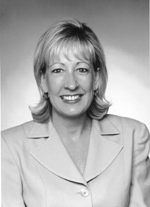Shadows
Shadows are what we're actually manipulating when we use lighting to enhance a scene.
The interplay of light and shadow is created by the application of layers of light.
Attached shadows reveals basic shapes of objects and we have expectations about where attached shadows should be as a result of light sources.
Cast shadows help us locate objects relative to the surroundings and make spatial judgments (how far the killer with the knife is from the wall and which ways he's moving, for instance)
Cast shadows also
- create mood
- suggest locale
You must be aware of shadows as a continuity issue—they must remain in the correct position as you change camera position.
Falloff
Managing falloff is how we work with shadows. Falloff indicates the contrast between light and dark and the rate of change from light to dark ("hardness" of the edge of shadows).
- Fast falloff: high contrast, hard shadow edges
- Slow falloff: low contrast, soft shadow edges
- Elimination of falloff: very little contrast (flat)
 |
 |
Fast Falloff |
Slow Falloff |
Falloff and outer orientation
- The principle light source (KEY LIGHT) and cast shadows orient objects and people spatially
- Manipulations of falloff provide tactile cues.
- Falloff indicates time of day and season.
Falloff and inner orientation
Establishes mood and atmosphere
- High-Key lighting (bright-diffused, slow falloff, light background) for "up" scenes
- Low-Key lighting (selective, fast falloff, dark backgrounds) for "down" scenes
- Predictive lighting: changes in light that suggest upcoming events
In the X-Files, a television show about FBI agents who investigated the paranormal, light was often used to create an atmosphere of suspense. This short clip from the episode "Clyde Bruckman's Last Repose" is a good example. (I am using a copyrighted clip from Fox Television's website for the purposes of illustrating lighting principles within the context of this course only.)
Look for
- uses of fast falloff
- Differences in lighting between scenes in the hotel room and scenes of a future event.
Achieving light and shadow
The way to create mood, indicate a time of day, and make sure the viewer can see your production (an important function of light!), you need to know how to set lights. Similarly, in multimedia work created in other types of programs, such as Photoshop and Flash, you need to know how to achieve the effect of light.
KEY light (not to be confused with high or low key lighting) is the primary source of light or the focal light source.
BACK light is light set behind a person or object. You must be particularly careful with back light because it can make the people or objects in front of it seem like silhouettes. There are time you may want this effect, but not, say, during an interview. You can reduce back light by eliminating its source or by adding KEY and FILL lights
FILL light is light added to the scene from anywhere (many times the sides) to fill in lighting that is not provided by the KEY light.
You'll often use combinations of these types of light.